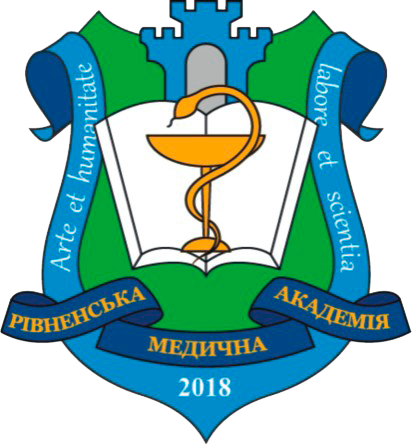SEARCH OF ASSOCIATIONS BETWEEN MOBILE PHONE USE AND SLEEP QUALITY IN PATIENTS WITH TYPE 2 DIABETES
DOI:
https://doi.org/10.32782/health-2023.4.7Keywords:
type 2 diabetes, mobile connection, age, sleepiness, body mass indexAbstract
People are getting addicted to the mobile phone because they get many opportunities by using it. Cell phones have many advantages, but there are also disadvantages. The possible health hazards of a mobile phone can be divided into two groups: thermal effect and non-thermal effect. Certain waveforms can be used to restore health in certain mental illnesses such as depression, insomnia, etc. This shows that the waves can affect the nervous system of people. Our work aimed to investigate and analyze the relationship between mobile phone use and sleep quality in patients with type 2 diabetes. For retrospective analysis of medical records, 71 patients with type 2 diabetes were included, and the BMI of these patients was calculated. The next stage of our research was a telephone survey to assess the quality of mobile phone use behavior. The level of daytime sleepiness was assessed according to the Epworth questionnaire. Data analysis showed that in patients with T2DM, systolic blood pressure and BMI did not depend on the age of the patients. At the same time, a predominance of men with T2DM was established, both mature and elderly. When comparing the studied indicators of patients with T2DM of different ages depending on the duration of mobile phone use, it was established that the systolic blood pressure, age, and BMI were probably higher in mature patients with a duration of mobile phone use of more than 8 years compared to the data of patients who have been using the phone for 5-8 years. At the same time, the age of patients and SAT among the elderly group was probably higher in patients with a term of use of more than 8 years compared to those who have been using a mobile phone for 5-8 years. Patients with T2DM have moderate (14.08%) and severe (77.47%) daytime sleepiness. A significantly higher percentage of mature and elderly T2DM patients who used a phone for more than 8 years was established, compared to the indicators in the group with a duration of 5-8 years of phone use, which in the case of mature age was associated with a significantly higher level of systolic blood pressure and BMI.
References
International Commission on Non-Ionizing Radiation Protection. Guidelines For Limiting Exposure To Time-Varying Electric, Magnetic, And Electromagnetic Fields (up to 300 GHz). Health Physics Society. 1998. № 74 (4). Р. 494–505.Available from:http://niremf.ifac.cnr.it/docs/icnirp.pdf
Blank Martin, Goodman Reba. Electromagnetic fields stress living cells. Pathophysiology. 2009. № 16(2–3). Р. 71–78.
Bhargavi K., Balachandrudu K.E., Nageswar P. Mobile Phone Radiation Effects on Human Health. International Journal of Computational Engineering Research.| 2013. April. № 3(4). Р. 196–203.
Iftekhar Uddin A S.M., Jannatul Ferdous. Radiation exposure of cell phones & its impact on human health a case study in south Asia (Bangladesh) and some recommendations. Journal of theoretical and applied information technology. 2010. Р. 15–21. Available from: https://www.jatit.org/volumes/Vol19No1/3Vol19No1.pdf
American Diabetes Association. Standards of Medical Care in Diabetes – 2019 abridged for primary care providers. Clin. Diabetes. 2019. Jan. № 37(1). Р. 11–34. DOI: 10.2337/cd18-0105.
Johns M.N. A new method for measuring daytime sleepiness: the Epworth Sleepiness Scale. Sleep. 1992. № 101. Р. 898–902.
Буряковська О.О. Порушення сну, що супроводжуються денною сонливістю у пацієнтів із гіпертонічною хворобою і цукровим діабетом 2-го типу. Медицина сьогодні і завтра. 2018. № 3(80). Р. 15–20.
Rangraz Jeddi F., Nabovati E., Hamidi R. et al Mobile phone usage in patients with type II diabetes and their intention to use it for self-management: a cross-sectional study in Iran. BMC Med Inform Decis Mak 2020. Feb. № 20(1). Р. 24. DOI: 10.1186/s12911-020-1038-y.
Boyle L., Grainger R., Hall R.M., Krebs J.D. Use of and beliefs about mobile phone apps for diabetes self-management: surveys of people in a hospital diabetes clinic and diabetes health professionals in New Zealand. JMIR MHealth UHealth. 2017. Jun. № 5(6). Р. e85. DOI: 10.2196/mhealth.7263.;5(6):e85.
Dobson K.G., Hall P. A pilot study examining patient attitudes and intentions to adopt assistive technologies into type 2 diabetes self-management. J Diabetes Sci Technol. 2015 Mar. № 9(2). Р. 309–315. DOI: 10.1177/1932296814560395.
Emodi-Perlman A., Hochhauser T., Winocur P., Friedman-Rubin P., Eli I. The effect of smartphones on daytime sleepiness, temporomandibular disorders, and bruxism among young adults. Quintessence Int. 2021. May. № 52(6). Р. 548–559. DOI: 10.3290/j.qi.b1244431. PMID: 33880912.





